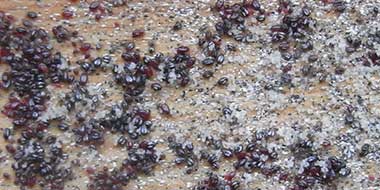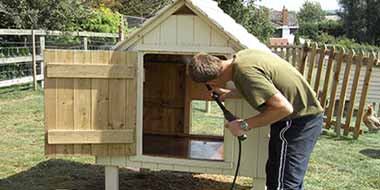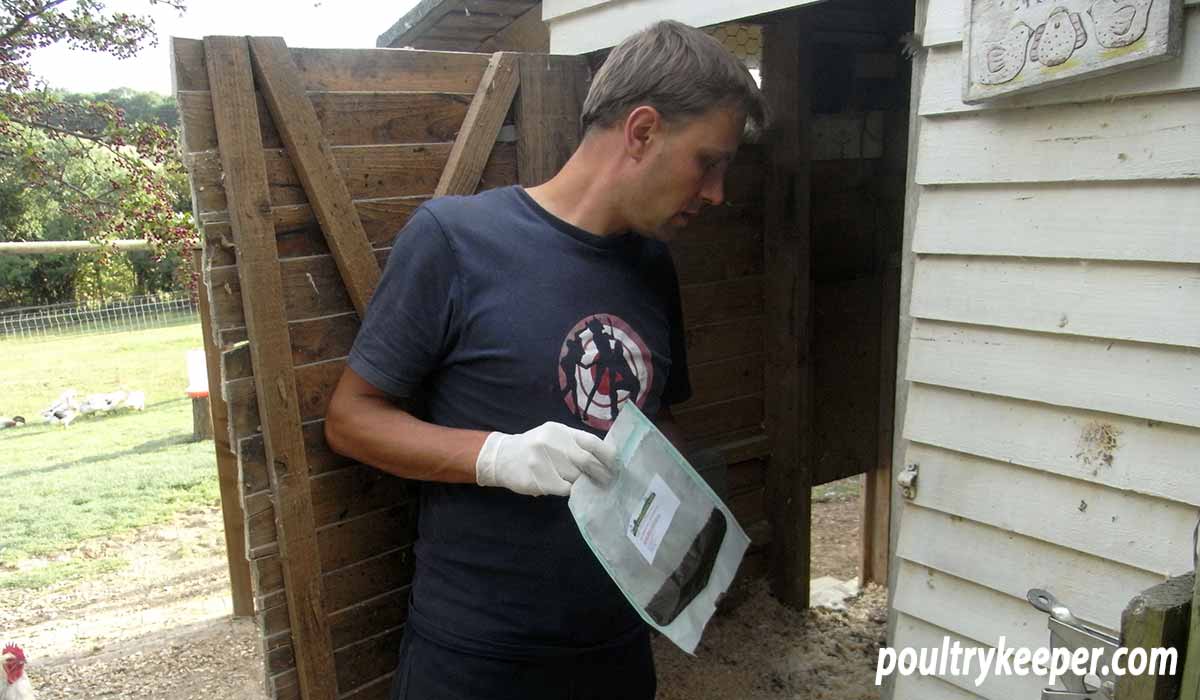
Red mites are the bane of many poultry keeper’s lives, and I have tried many red mite treatments over the years to rid my own coops of them. During the summer of 2011, I heard about predator mites that could be introduced into a chicken coop to eat red mite for breakfast… lunch… and dinner! They sounded like the perfect solution to my red mite problems, so I thought it was well worth checking these little fellas out!
The predator mites for my trial were supplied by St David’s Poultry (AKA Chickenvet), and I am grateful to them for supplying the mites and providing information about them to me.
First things first...
If you're not familiar with red mite at this point, before you read on, I would strongly suggest you pop over to my 'Ultimate guide to red mite'. This gives the low-down on this nasty little red ectoparasite, its lifecycle, and photos to help you identify it.
Replacing one mite with another?
The first thing that sprang into my head was replacing one mite problem with another by adding another type of mite to the chicken coop. Well, thankfully not. The predator mite is very easily killed compared to the red mite, and any of the normal red mite treatments will kill them off; however, it is important NOT to have treated the coop with any of the usual paraphernalia of red mite treatments so that our predatory mites can live as long as possible, feeding on the red mites as they go.
Once the food supply is removed, the predator mites will die within 7 days, and once the cold weather arrives, they also die, so there is no fear of them turning into a plague in the coop.
Predator mites aren’t good with water either, so if you want to get rid of them, you only need to wash the coop out with water.
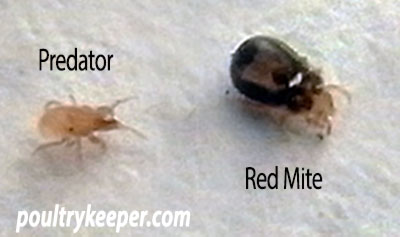
The key to success
For the predator mites to work, there are some critical points to keep in mind. These mites aren’t half as resilient as the red mite, so if you get it wrong, they won’t survive.
The predators arrive in a sealed pack, held within a substrate that looks very much like potting compost. A comprehensive instruction sheet comes with them, which details some crucial points that we MUST follow to be effective. Combined with what I have learned, here are the key points you need to know:
- You must not have used red mite treatments in the chicken house for 4 weeks before introducing the red mite. The coop should have been hosed out during this time, too, so that products such as Diatomaceous Earth or Red Mite Powder are washed away.
- It would help if you used the predators immediately upon arrival. They can only survive a short time without a feed and will starve if you delay distributing them.
- Predatory Mites need to be kept warm. Ideally, between 8 and 20 degrees C. Above 30 degrees (not much fear of that in the UK) will kill them, as will low temperatures.
- It would help if you introduced the mites evenly around the coop but not in deep litter. Concentrate on the cracks and crevices as well as nest boxes, perch ends and underneath feed containers. Red mite is usually found near chickens, where they roost at night.
- You shouldn’t clean the house for a couple of weeks. Removing the litter will remove the predators too. Pick droppings out rather than cleanout.
- Make sure there are no wet floors or leaky drinkers – they do not tolerate getting wet.
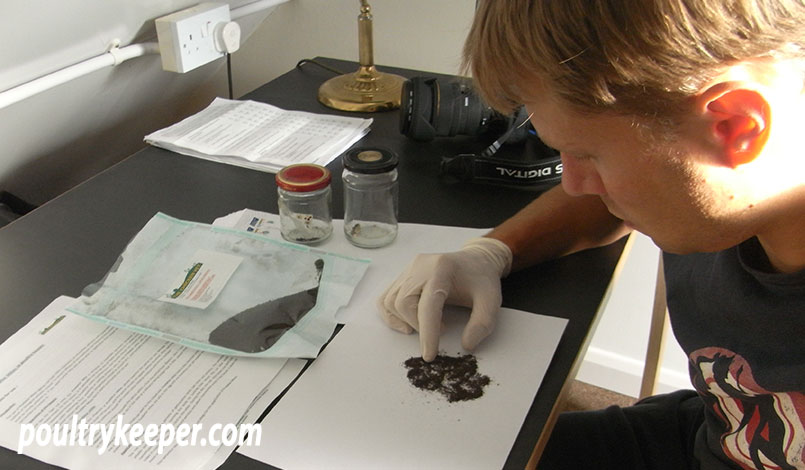
Before I treated my chicken coop, I had a close look at the predators on a sheet of paper and took a few photographs of them. At the beginning of this article, the photograph is one of the macro photos I took of an adult red mite (after a blood feed) and a predator mite. From this, the predators are smaller than the red mites, which makes them very hard to see in the supplied substrate (which looks like and probably is garden compost).
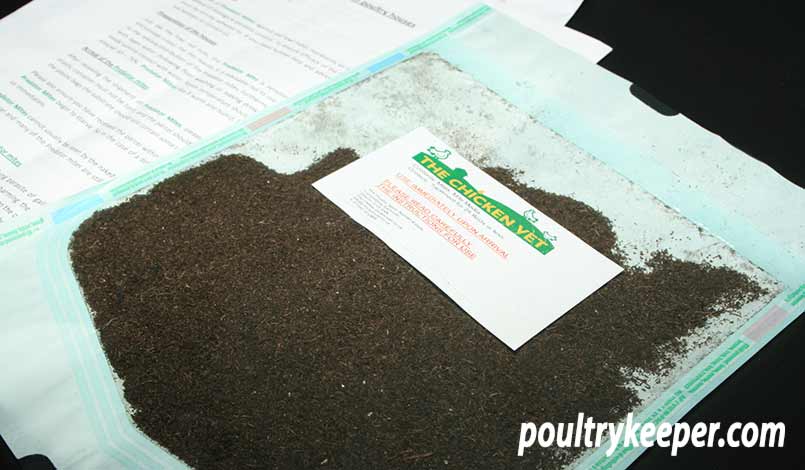
If you look very carefully at the supplied bag through the clear window, you can see the predators moving around. You’ll need good eyesight and patience for this, though!
Using the mites
I added the mites to an area with a red mite infestation in the wall cracks and around the end of one of the perches. The rest of the mites were distributed evenly around the chicken house…. and waited.
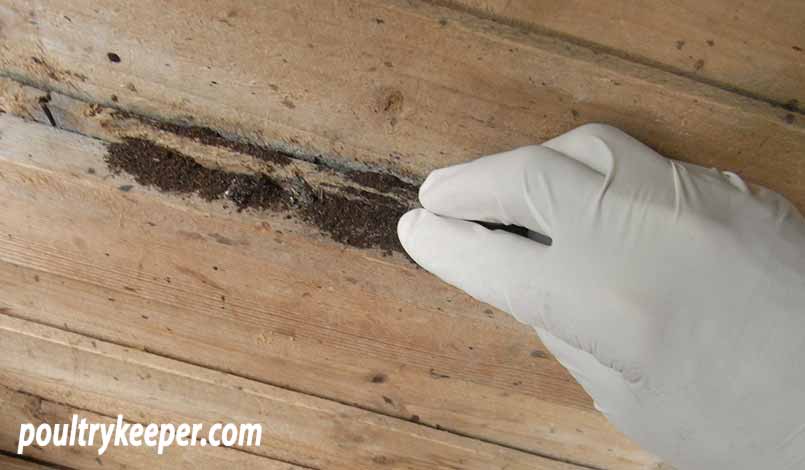
Two weeks later, I examined the same crack again, looking for red mites and predator mites. Neither could be found. I found evidence of mites by the dirt that they had left but in terms of mite activity? Not a sausage.
I did find a tiny crack that contained red mite. This was in the joint of two perches at 90 degrees that form a ‘T’ in mid-air in the coop. The predators hadn’t been distributed here and had obviously not made it across the perch to this point.
Other useful articles & guides on red mite:
- The Ultimate Guide to Red Mite -A comprehensive guide to this ectoparasite.
- Will Red Mite Infest your House? - You might be surprised at the answer...
- Red Mite Treatment: My Top 8 Products - My views on the best red mite killers.
Conclusions
The predator certainly did its job and removed the red mite where I had distributed it. I can see these being a precious asset in the fight against the red army. They can also reach parts that other treatments cannot reach.
The patch of red mite I found in the joint of my perches had not had any predators near it, so the predators either haven’t made it here yet or hadn’t been able to crawl along with the perch and find them.
To conclude, the predator mites’ whereabouts is also difficult, with them being so small and difficult to see. They could have moved on elsewhere in the coop after feeding on the red mite, or they could have come across some remnants of diatom in a crack that I was using liberally a month earlier.
This really emphasises the need to use them in coops without red mite treatments, as I wonder if the diatom I used is still in some of the cracks. The final possibility I can think of is that the predators ate all of the red mites and starved to death.
This is mentioned in the directions for use; if you add too many predators, they can use up their food supply too quickly and die before the next round of red mite hatch from their eggs. The predators die in about 7 days without a feed.
I’m quietly hoping, though, that somewhere in my coop in a deep crack, there’s a bit of a party going on. I hope they are hidden away, munching on another cluster of mites, filling their bellies in an all you can eat ‘red mite style’ buffet.
Bon Appetit Predator Mites…!
My thanks to the Chicken Vet team for sending me the predator mites to try.
To learn more about the dreaded red mite, please read my Ultimate Guide to Red Mite.



